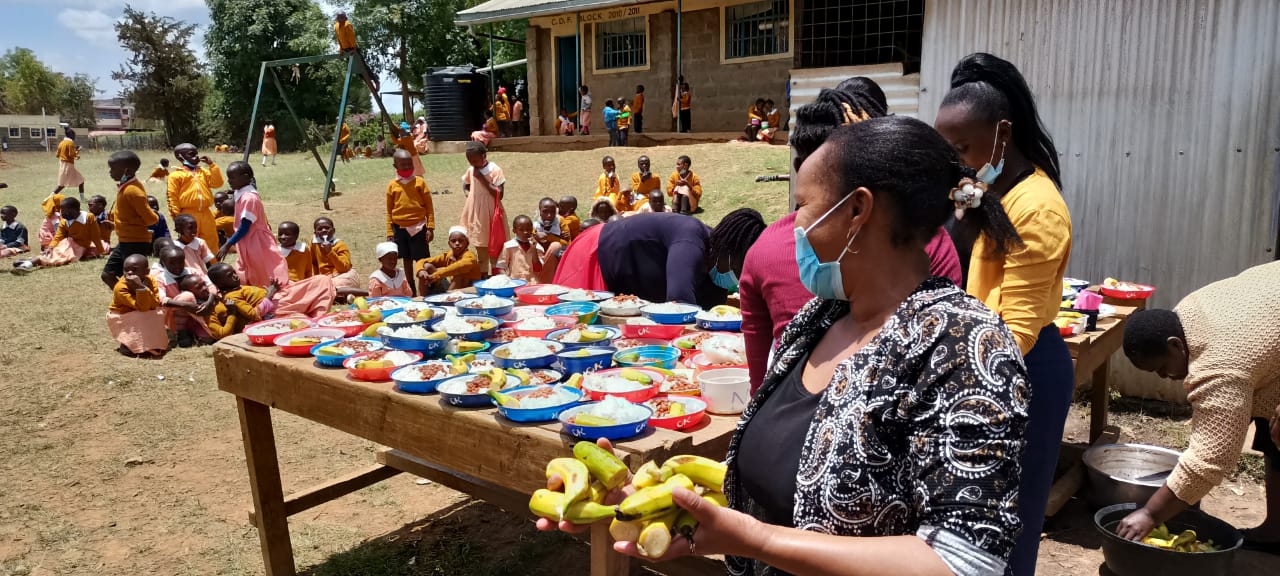Famine is a recurring challenge in Kenya, affecting millions of people each year. The situation is often compounded by drought, conflict, and other factors that limit access to food and water. While governments and NGOs play a critical role in addressing the issue, households can also take steps to help prevent and mitigate the effects of famine. In this post, we will explore some practical solutions that households can adopt to deal with famine permanently.
Top Facts about Hunger in Kenya
Do you know Kenya is one of the hungriest countries in the world? Almost after 60 years since her independence, Kenya loses thousands of her people and children to famine and hunger related human casualties every year. Below is a summary of top facts about the current hunger situation in Kenya.
- Kenya ranks as the 94th hungriest nation among 121 countries according to the latest Global Hunger Index Report.
- Twenty-five percent of children in Kenya suffer from stunted growth due to poor nutrition.
- Kenya faces rising food prices with the latest food inflation rate recorded at 9.2 percent in February 2023
- Over 5.4 million people face life threatening hunger across Kenya.
- More than 60% people of Kenya live below the poverty line.
- Main staple food of Kenya is maize, which accounted about 65% of total staple food caloric intake and 36% of total food caloric intake
- Kenya’s import dependency ratio on food is 14.5%.
- The most hungry counties facing worst starvation in Kenya are predominantly pastoral or ASAL. They include; Isiolo and Turkana, Garissa, Mandera, Marsabit, Samburu and Wajir and Baringo. Other worst hit areas are the informal urban settlements
What are the main causes of hunger in Kenya
Hunger in Kenya affects up to 25% of her population. Million of others have limited access to the recommended caloric intake and balanced diet composition. According to many, this remains a paradox given this sub Saharan country is endowed with fit soils, climate and other conditions for ample food production. This begs answers for what are the main causes of hunger in Kenya.
Related; How To Save Money On Food During Inflation
Hunger and famine in Kenya are caused by a range of factors, both natural and man-made.
Natural factors include drought, floods, and other climate-related disasters that can lead to crop failures and livestock deaths. These natural disasters are often exacerbated by climate change, which has led to more frequent and severe weather events.
Man-made factors that contribute to hunger and famine in Kenya include;
- Poverty-many families cannot afford to purchase enough food to meet their basic needs.
- Lack of access to education and healthcare– these contributes to food insecurity since individuals may not have the knowledge or resources to grow their own food or access necessary medical treatments.
- Political instability and conflicts– these conditions can disrupt food production and distribution systems, as well as cause displacement and loss of livelihoods.
- Poor government policies– Kenya’s national government and county governments prefer knee-jerk reactions such as sending relief food to the affected communities rather than a sustainable long term plan to address this recurrent crisis permanently
- Disrupted global food supply chains– in the last two years, the hunger situation in kenya has worsened due to the COVID-19 pandemic and the Russia-Ukraine war affecting food availability for imported foods such as cooking oils
How to solve hunger in Kenya
Overall, hunger and famine in Kenya are complex issues that require a multifaceted approach to address the root causes and provide sustainable solutions for affected communities. Below we focus on how your household or as an individual you can help prevent and mitigate the effects of famine. These solutions are;
1. Diversify Your Food Sources
Relying on a single crop or food source such as ugali is risky. Its even worse during periods of drought or other supply crises. To prevent famine, you should consider diversifying your food sources by;
- Growing different crops like traditional vegetables
- Raising small animals, such as rabbits or chicken on your backyard.
- Purchase, store and cook a variety of locally available foods. When you diversify your meals, you ensure a steady supply of food, even when certain crops or foods are unavailable or expensive.
2. Store Food and Water
During times of plenty, households should store food and water to prepare for times of scarcity. This can include;
- Purchasing and storing non-perishable foods like grains, beans, dry vegetables and canned goods.
- Rain water harveting and storing water in containers or tanks.
- Animal feed and fodder preservation
Having a stockpile of food and water can help ensure that households have access to basic necessities during times of famine.
3. Practice Water Conservation
Water scarcity is often a key factor in famine, and households can take steps to conserve water and reduce water usage. This includes fixing leaks, collecting rainwater, and using water-efficient appliances. Additionally, households can adopt water-saving habits such as drip irrigation turning off taps when not in use, and only watering plants when necessary (Precision irrigation).
4. Build Resilience
Building resilience is a key factor in preventing famine and dealing with its effects. This includes investing in education, healthcare, and other resources that can help households weather crises. Additionally, households can participate in community-based organizations and village based savings groups, which can provide a safety net during times of need.
5. Prepare for Emergencies
Despite the best efforts to prevent famine, emergencies can still arise. Households should be prepared to respond quickly to emergencies by having a plan in place and keeping emergency supplies on hand. This can include first aid kits, emergency food supplies, and communication tools like radios and cell phones.
6. School feeding programs
Each day, millions of primary school going children go hungry every day. School feeding programs is a multifaceted solution to reduce hunger while increasing school enrollment. For most vulnerable children, the single mid-day school meal is the only meal they rely on. Given the importance of the school feeding programs, they should offer more than full bellies. An Example is the LISHA school feeding program in Nanyuki, Kenya. It receives voluntary funding and donations in-kind from businesses in the town.
Read More: How to run a school lunch program
By adopting these practical solutions, households can help prevent and mitigate the effects of famine. While the problem of famine is complex and multi-faceted, individuals can play a critical role in addressing the issue by taking proactive steps to build resilience, diversify food sources, conserve water, and prepare for emergencies.
Follow us
About Agcenture
Agcenture.com is an agriculture and food blog that provides resources and tools to help farmers and agribusinesses succeed.
Never miss our latest news and updates! Let’s connect and explore the possibilities together on Facebook, Twitter, Linkedin , YouTube and WhatsApp @ Agcenture.


